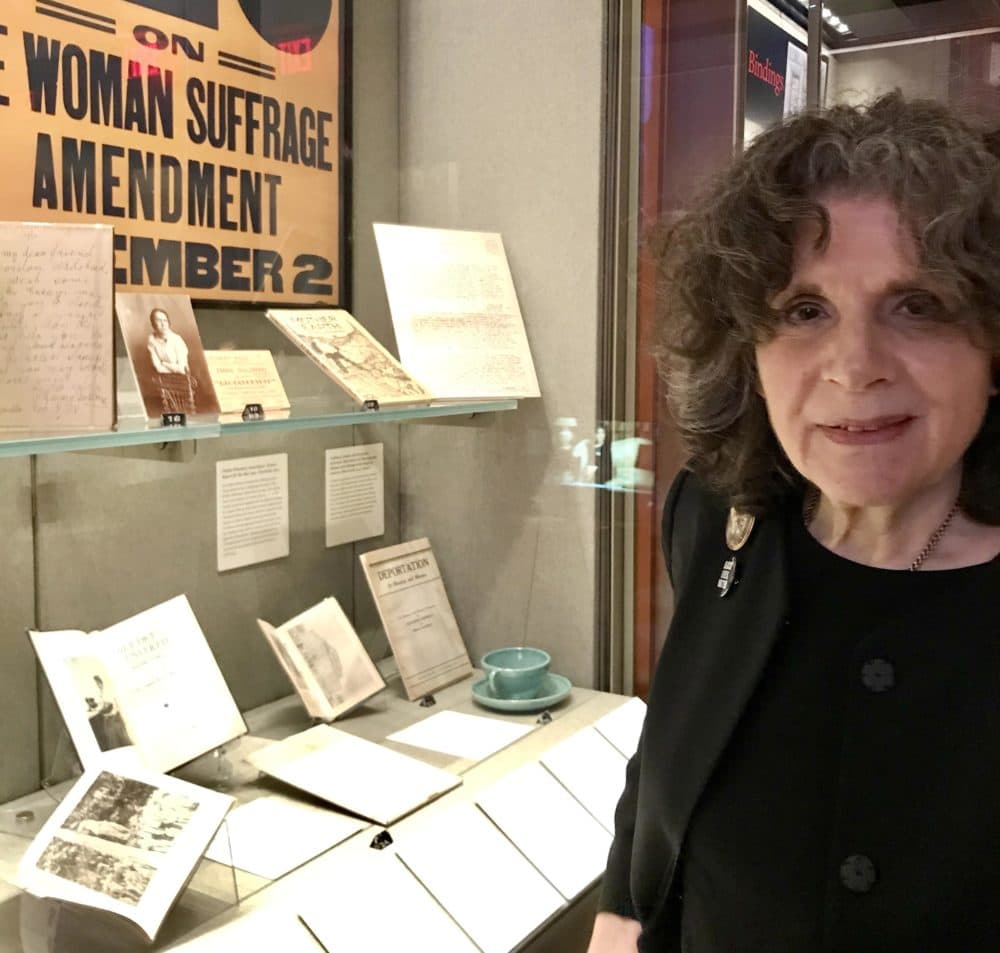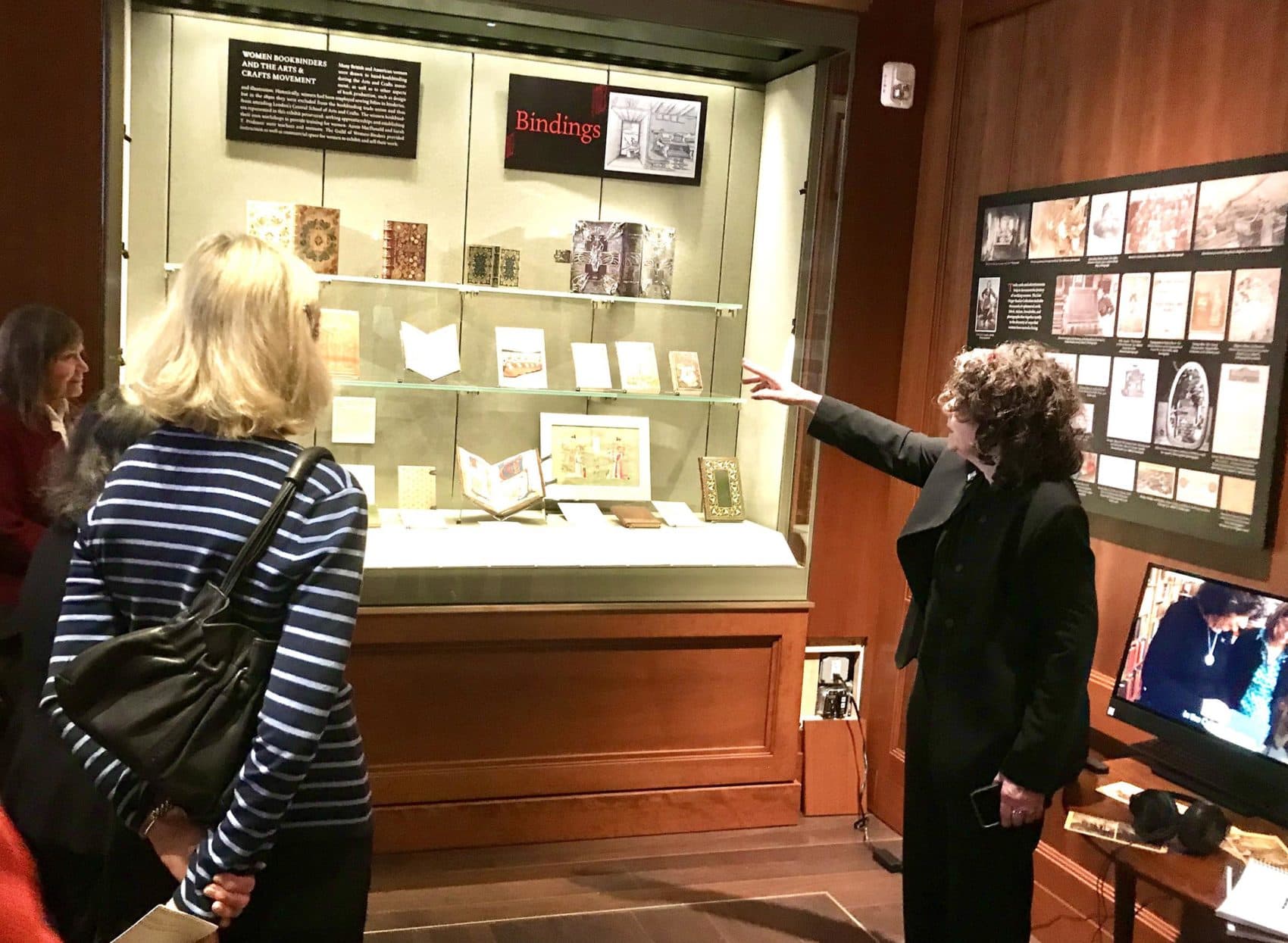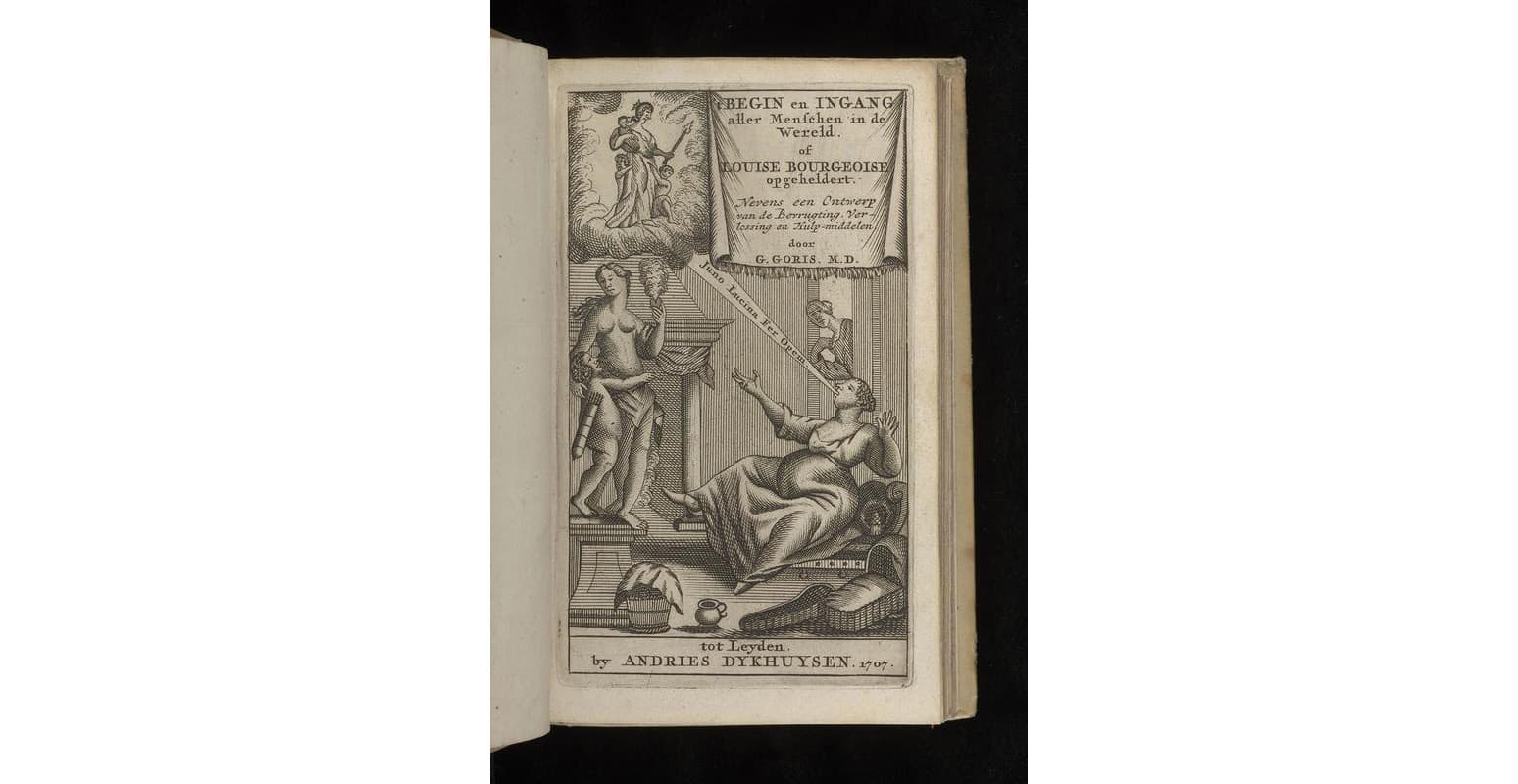Advertisement
Northampton Resident Documents 500 Years Of 'Women's Work'

The historical contributions of men fill most major museums and archives. Women are usually sidelined. One collector from western Massachusetts, Lisa Unger Baskin of Northampton, has spent a lifetime addressing the imbalance.
Highlights from her collection are now on display at the Grolier Club in New York City.
Founded in 1884, this club for book collectors is a solemn, learned, even patrician space.
The club only began admitting women members in 1976. So it’s perhaps fitting that the club is hosting a unique exhibit documenting women’s contributions to the western world.
Baskin said her life’s work has been to reveal “the history of women — history that was not being written about, thought about, and collected.”
In a wood-paneled room with a cathedral-ceiling, Baskin stepped from glass case to glass case, leading a gaggle of visitors — mostly women — on a tour. Pointing out weathered books and artifacts, she told nearly-forgotten stories from centuries of courageous, creative, scientifically-minded and entrepreneurial women.

Charlotte Guillard, for example, provided printing services in the city of Paris 500 years ago. She built “a huge printing establishment with multiple presses,” and managed a large staff, Baskin said. “She was a very, very good businesswoman.”
Guillard and another printer, Yolande Bonhomme, got together and filed a lawsuit “because the paper quality was lousy” in Paris, Baskin said.
The women lost the lawsuit, “but the idea of these two women getting together and suing” — it’s as if they were bound by sisterhood, Baskin said, even if the women wouldn’t have used such contemporary language.
Baskin pointed out a thick book, its pages browning — the work of Louise Bourgeois, a midwife to Marie de Medici, the 17th-century queen of France. Bourgeois helped deliver at least 2,000 babies despite resistance from the male medical establishment.
“And she wrote the first book on obstetrics by a woman,” Baskin told her tour.
Advertisement

Bourgeois’s obstetrics guide was translated into English, German and Dutch and continued to be influential a century after she wrote it.
At another display, Baskin pointed to a letter penned by an important figure in late 18th-century politics.
“Helen Maria Williams and Tom Payne were considered the conduits to the English-speaking world of information about the French Revolution,” Baskin said. “We know Paine. We don't know Helen Maria Williams.”
Yet Williams’s contributions were considerable, Baskin said.
“She was jailed in Paris during the terror,” she said. “She had a so-called salon… She was a very productive, important writer at that time. And political. And a feminist.”
In her decades of collecting books and artifacts, Baskin wanted to show that women did much more than care for children and husbands: They made and sold instruments; they prepared and laid out the dead; they bound books and sold them.
A Mrs. Phillips — her first name is lost to time — marketed an important source of protection for men having sex outside of marriage. Mrs. Phillips made her product from animal skins and bladders.
Baskin discovered Mrs. Phillips’s business card, which “advertise[d] to captains and people who are going off on voyages,” Baskin told the group. The card doesn’t mention the object for sale, but the message is clear: “Come and get your condoms here,” Baskin said, and the group laughed.
Many items in the collection illustrate frustrated ambitions. Martha Maxwell wanted to be a scientist but never got the chance. Instead, Maxwell traveled the western United States with her husband and children, seeking gold in the Gold Rush and hunting animals. She taught herself taxidermy.
Maxwell insisted on displaying her specimens, from hummingbirds to buffalo, in ecologically accurate settings.
“So those great dioramas that we see at the Natural History Museum — she was really the first one who did that,” Baskin said.
Yet while Maxwell may have pioneered the practice, her work never appeared in any major museum.
“She ended up at Coney Island… as a side-show with her animals,” Baskin said.
Over the years, Baskin found that the works of white women and of well-known women of color were fairly accessible. The collection highlights African American women such as the 18th-century writer Phillis Wheatley, the activist Sojourner Truth and pioneering investigative journalist Ida B. Wells.
But Baskin had to look harder for archival evidence of the lives and labors of other black women — especially of the forced labors of enslaved women.
Baskin pointed to a tattered paper under glass — a doctor’s note from 1831. This small paper was “the most upsetting” object Baskin has encountered.
The doctor writes of examining an enslaved woman he calls Alsy. He has diagnosed a prolapsed uterus. Alsy can be made “useful” again, the doctor assures Alsy’s enslaver, as long as the doctor fits her with a metal device that “would prevent her womb from falling down,” Baskin said. “In other words, [Alsy can be] sent right back into the field to work.”
Baskin found the small, worn note one evening years ago at a book fair in Boston.
“The content was so distressing to me that I didn't buy it that night,” she said. “But what was going through my head all night was: Of course I had to own this [and] save this… It needed to be seen.”
After the tour, Suzanne Coley — an African American artist and, this year, an artist-in-residence in the New York public schools — found herself moved by the exhibit’s “powerful, thoughtful, compelling... work by women from all races, all classes, various countries… through the centuries.” She said she’s inspired to continue helping her students, especially black girls, to express themselves, “so that other people can really see who they are, what they think, how they think, and that their voices are just as important as any other voice.”
Those student voices, Coley believes, are not so different from the ones retrieved by this collection.
“Five hundred years ago,” she said, “it was the same.”
The exhibit, "Five Hundred Years of Women's Work," runs through February 8.
This story is a production of New England News Collaborative. A version of this story was originally published by New England Public Radio.